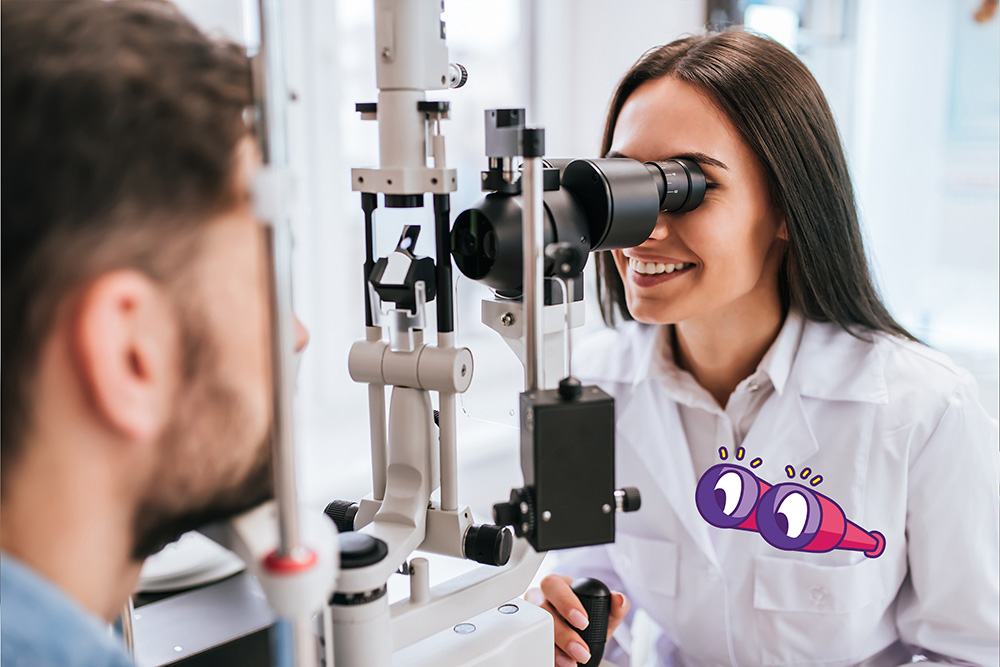Understanding Glaucoma
Explore this health file to better understand Glaucoma: its causes, its symptoms but also the means of treatment.

Posted on
I. Definition and key figures
Glaucoma is an eye disease caused by damage to the optic nerve. When an individual is affected by glaucoma, he or she experiences an abnormal increase in pressure inside the eye. If left untreated, glaucoma can lead to visual impairment or even irreversible vision loss. Early detection of glaucoma is therefore essential. [1]
 [1]
[1]
There are two types of glaucoma:
- Open-angle glaucoma, the most common form of glaucoma. It is a chronic and progressive condition that generally affects both eyes unequally. [2]
- Angle-closure glaucoma, on the other hand, is a rarer form, appearing suddenly in the individual (acute angle-closure glaucoma) or slowly and progressively developing over time (chronic angle-closure glaucoma). [2]
Key figures:
- Nearly 64 million people suffer from glaucoma worldwide. [2]
- According to the WHO, glaucoma is the second leading cause of blindness worldwide. [2][3]
II. Causes
There are many causes of glaucoma.
Either way, it is generally linked to an increase in pressure inside the eye, caused by an abnormal outflow of eye fluid. [1]
Glaucoma can also be caused by genetic factors. If members of your family have been affected by glaucoma, your risk of developing it may be higher. [2]
Age can also be a risk factor for glaucoma. It generally appears after the age of 40, and its frequency increases from then. [1][2]
Finally, certain ethnic groups, particularly those of black ethnic origin, have an increased risk of developing glaucoma. [2]
III. Symptoms
Glaucoma is a pathology that can be difficult to spot as in the majority of cases, it presents no symptoms for many years. However, in other cases, signs may appear [2]:
Open-angle glaucoma
This type is painless and doesn’t usually produce early symptoms. Its main symptom is the progressive appearance of blind spots over the following months or years. Without diagnosis and treatment, these spots grow slowly and eventually merge, leading to vision loss.
Before vision loss occurs, certain behaviors can raise red flags, such as [2]:
- Running over obstacles (stairs, steps, sidewalks)
- Noticing missing parts of words when reading
- Driving difficulties due to peripheral vision narrowing (tunnel vision)
Angle-closure glaucoma
Acute angle-closure glaucoma
Angle-closure glaucoma can appear suddenly. Signs include [2]:
- Intense eye and head pain
- Blurred vision, multicolored halos, and sudden loss of vision.
Acute angle-closure glaucoma is a medical emergency due to the rapid deterioration of vision following the onset of symptoms. It must be treated within 2 to 3 hours to avoid permanent loss of vision. [2]
Chronic angle-closure glaucoma
Angle-closure glaucoma can also be chronic and if so, the symptoms of the disease progress in the same way as open-angle glaucoma, i.e., slowly. Symptoms may include [2]:
- Redness or discomfort in the eyes
- Blurred vision or headaches that diminish with sleep
IV. Prevention
There are measures to prevent or reduce the risk of developing glaucoma [4]:
- Have your intraocular pressure regularly checked by an ophthalmologist
- Adopt a healthy lifestyle: a balanced diet, regular physical activity, and stopping smoking
- Use protective eyewear during high-risk activities
- Know your family history to anticipate any risk of glaucoma. In case of positive risk, consult an ophthalmologist every two to three years, from the age of 40.
V. Treatment
There is no cure for glaucoma. However, current treatments are aimed to control intraocular pressure and preventing disease progression. [5]
In case of chronic glaucoma, eye drops may be prescribed to reduce intraocular pressure and keep it below a certain threshold to prevent the disease from progressing.
If eye drops are not enough, laser treatment or surgery may be suggested by a healthcare professional. [6]
Treatment of acute glaucoma is very similar. It involves taking medication to reduce intraocular pressure. It is followed by laser treatment, or, more rarely, surgery. [6]
Explore our health files by clicking here.
